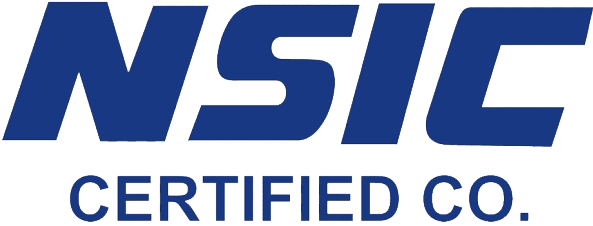Whoa. Bitcoin feels different these days. At first glance it’s still the same ledger, same mining, same blocks. But ordinals and the BRC-20 experiment have nudged the network into territory that feels part art gallery, part token market, and part developer playground. I’m biased, but this part of Bitcoin—messy, emergent, and occasionally frustrating—actually excites me more than a lot of shinier chains.
Here’s the thing. Ordinals let you inscribe data directly on satoshis. Short explanation: you can attach content—images, text, tiny programs—to individual sats and track them. Medium explanation: that creates a new primitive on Bitcoin, one that developers are using to build collectibles, metadata layers, and yes, fungible token standards like BRC-20. Long thought: though ordinals don’t change Bitcoin’s consensus rules, they do change the cultural and economic incentives around block space, which has knock-on effects for wallets, UX, and fee markets as more people interact with on-chain artifacts in creative, sometimes chaotic ways.
I’m not saying this is flawless. Somethin’ about the UX bugs me. Wallets built for ordinals need to show inscriptions attached to sats, let users inscribe, and also manage BRC-20 mints and transfers. That’s a lot to pack into interfaces that historically handled only UTXOs and simple scripts. On one hand you get more functionality. On the other, you get complexity that can confuse everyday users. My instinct said this would be messy—and it was. But then a few wallets started to stitch the pieces together in smart ways.

Wallets: The interface problem turned product opportunity
Okay, so check this out—wallets are the battleground. If you’re working with Ordinals or BRC-20 tokens, you need a wallet that understands three things: which sats carry inscriptions, how to estimate fees for inscription-heavy transactions, and how to serialize BRC-20 operations. That sounds nerdy. But practically, it means a wallet should show image previews, allow you to inscribe data (if you want), and present token balances in a way humans can grok.
I’ve tried a handful of browser-extension wallets and mobile apps. Some are rough. Some are surprisingly slick. One wallet that keeps showing up in conversations and that I found useful for quick experiments is UniSat Wallet — it’s lightweight and geared to the ordinal/BRC-20 flow, which makes it a good starting point for people tinkering with inscriptions and token mints. If you’re curious and want something that gets the basics right, give https://sites.google.com/walletcryptoextension.com/unisat-wallet/ a look.
Initially I thought wallets would simply add a tab for “Ordinals” and call it a day. Actually, wait—let me rephrase that. I thought the UI challenge was minor. But then I saw how transactions that move inscribed sats can split or merge inscriptions in non-obvious ways. On one hand that’s fascinating from a protocol perspective; on the other, it’s a UX hazard. Wallets that don’t warn users about inscription behavior risk causing accidental burns or unexpected token movements. So design matters—a lot.
Another thing: fees. When block space demand spikes because people are inscribing large data, fees climb. That changes the calculus for everyone paying on-chain. Some wallets now include fee estimation tailored to inscription transactions, others still use generic estimators. That difference can be the gap between a successful mint and a stuck transaction.
BRC-20: an experiment that’s bigger than its spec
BRC-20 was never meant to be the final word on tokens. It emerged from playful experimentation—kind of like a Twitter hack that got very, very popular. In short, BRC-20 uses ordinal inscriptions to encode a minimal token standard. The community built tooling around it fast. The result has been a wave of mints, marketplaces, and a ton of creative projects. Seriously? Totally.
On the technical side BRC-20s are constrained and quirky. There’s no smart contract execution like EVM; instead, token state lives implicitly in inscriptions and transfer semantics are enforced by off-chain tooling and conventions. That means wallets and indexers are critical for making tokens usable. If your wallet doesn’t consult an indexer or interpret BRC-20 inscriptions properly, you won’t see your balances. That has real world consequences when people think they minted tokens but can’t transfer them because the UI doesn’t support the right serialization.
I’m not 100% sure what the long-term role of BRC-20 will be. On one hand, it’s a proof-of-concept that broadened imagination—people are building tokens and marketplaces on Bitcoin. On the other hand, it’s messy and brittle, and may inspire more robust standards. Either way, wallets that ignore BRC-20 risk alienating a vocal segment of users who are actively experimenting.
Here’s what bugs me about the current landscape: too many tools assume users are developers. They expose raw hex, inscrutable status codes, and little hand-holding. For mass adoption to happen, wallets will need to translate these technical artifacts into human actions—names, images, clear warnings, and sane defaults. That’s product work, not protocol work, but it’s essential.
FAQ
Do I need a special wallet for Ordinals and BRC-20s?
You don’t strictly need one, but it’s highly recommended. Standard Bitcoin wallets won’t show inscriptions or understand BRC-20s. Choose a wallet that indexes ordinals and explicitly supports BRC-20 flows, otherwise you’ll miss balances or accidentally move inscribed sats. If you want a quick place to start, check out UniSat Wallet for browser-based experiments.
Will inscriptions bloat Bitcoin?
They increase demand for block space, yes. That can raise fees for everyone temporarily. The network handles it, but there’s a trade-off: more data on-chain equals higher resource use. Some people welcome that; others think it’s harmful. The debate is ongoing—on one hand creativity; on the other, infrastructure cost.
Wrapping up feels weird—I don’t want to firm up a prediction like it’s a guarantee. On balance: ordinals and BRC-20s are forcing wallets to evolve. They’re pushing UTXO UX to get smarter. For folks building tools(stateside or abroad), this is a moment to design for ambiguity and educate users gently rather than overwhelm them. I’m excited, and also cautious. There’s opportunity here, messy and real—so get your wallet tested, read the fine print, and if you’re experimenting, expect surprises (and maybe some headaches). Someday this will look obvious. For now it’s a bit wild—and that’s fine.










